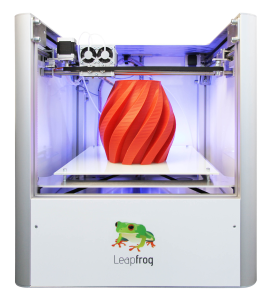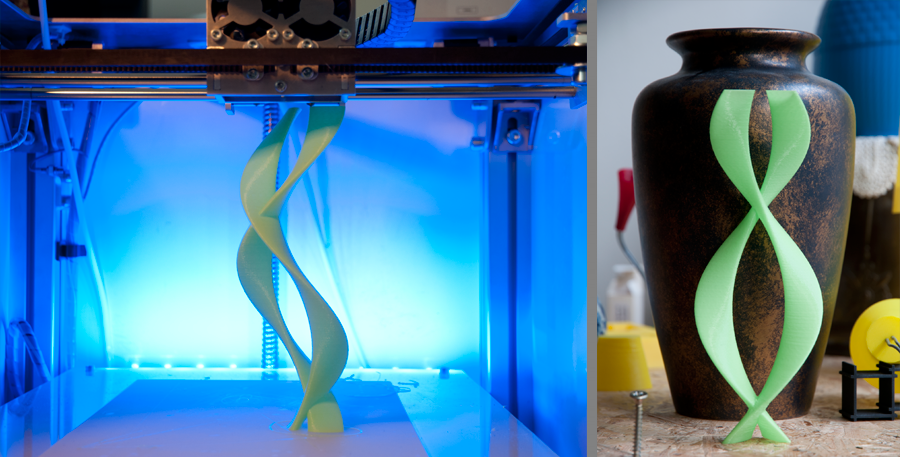When you start a blog to document criticisms of your 3D printers failings, the last thing that you would ever expect for that blog to turn into is a showcase of the amazing things that your 3D printer can do.

Rather than just give up and toss his new toy away, Kamper went looking for resources to make it better. Sadly, he found very little in the way of help from the internet, so he decided to “tame his robot” on his own, blogging about his troubles and how he learned to solve them along the way. While many of his initial posts did not portray 3D printer manufacturer Leapfrog in a positive light, as he became more familiar with how his printer worked he found the tone of his blog changed rather dramatically. He now often shows off fantastic 3D printing projects that really test the limitations of the Creatr.
Kamper has just posted his latest Creatr success story — the NewHelix model, which printed without any support structures all in one piece. While it easily stood up on the print bed, once it was removed it could no longer stand. That isn’t easy for a 3D printer to do, and the Creatr handled the print extremely well.
“This print has very sharp edges and most of them are printed perfect, though there are some small problem areas. At the crossings, the printer has to create some crazy bridges, so in the armpits of these crossings a small hole is almost impossible to avoid,” explained Kamper. “There are limits in 3D home printing and I did not think Creatr could produce NewHelix, but it did!”
The model was printed on a bed set to 52 degrees celsius, and at that temperature the model easily stuck to the bed and held it firmly in place. Kamper notes that Leapfrog suggested that prints of this type should be printed on a bed heated to 60 degrees celsius.
When we first wrote about Kamper a few months ago, there was debate over his choice of 3D printer and a suggestion that he should have purchased an Ultimaker. Of course Kamper didn’t purchase his Creatr, he won it, but the point is still valid. The Ultimaker is widely considered one of the best 3D printers on the market. But is it a better 3D printer, or simply a more refined 3D printing experience? It’s certainly a more expensive 3D printer, but as Kamper has proven, the Creatr is capable of some rather impressive prints.
I don’t think this is really a problem with the technology, but rather a problem with the way the technology is sold to us. To say that 3D printing companies gloss over the realities of 3D printing is, at best, an understatement. Kamper has proven that the Creatr is a good 3D printer, it just took him a year to get it to be one.



